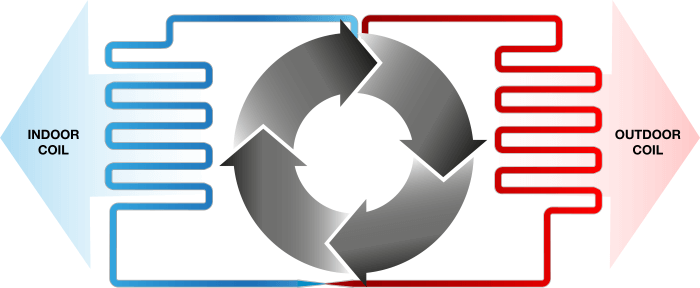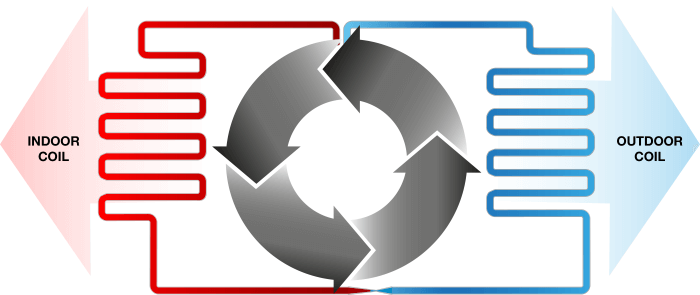
More and more states and cities across the U.S. are mandating alternative energy sources over fossil fuels such as natural gas. As a result, the HVAC industry is increasingly interested in alternative energy sources for heating and cooling equipment. One alternative technology that has worked well in residential HVAC applications but has only recently started to be used in commercial buildings is the air-source heat pump (ASHP).
Improvements to ASHP technology have made it a viable and effective option, especially where natural gas use is restricted. Here are answers to three common questions about this technology.
1. What Is an Air-Source Heat Pump and How Does It Work?
- An outdoor coil and an indoor coil
- Compressor(s) to pump refrigerant
- Outdoor fan(s) to move ambient air across the outdoor coil
- Indoor fan(s) to move supply air across the indoor coil
- An expansion device to regulate the flow of refrigerant and maintain pressure and temperature
- A reversing valve to offer both heating and cooling
- Absorb heat at the indoor coil and release it to the ambient air at the outdoor coil, providing indoor cooling, OR
- Absorb heat at the outdoor coil and release it to the supply air at the indoor coil, providing indoor heating.
|
Our air-source heat pump application guide goes into more detail about how ASHPs work and how to design them to maximize their benefits.
2. Can Air-Source Heat Pumps Function in Cold Weather Climates?
Improved technology now allows heat pumps to operate successfully in colder climates. Greenheck’s ASHPs, which have a single-circuit refrigeration system and multiple compressors at 20 tons and above, can provide heat to a building when the outdoor temperature drops to as low as 0°F.
However, a secondary heat source is required once ambient temperatures plummet below 0°F. Secondary heat sources may include electric heat resistance, hot water/steam, and indirect gas systems. These secondary heat sources would operate as the main heat source when air-source heat pumps are locked out due to low ambient temperatures. They could also operate as a secondary heat source supplementing the air-source heat pump in situations where the heat pump cannot provide the full required heating load, ensuring consistent control of supply air temperatures. This is often more efficient than all-electric heating, as measured in kilowatts consumed.
3. Air-Source vs. Geothermal Heat Pumps: Which Is Better for Commercial Buildings?
The two heat pump technologies that offer the most potential for commercial buildings are geothermal and air-source. In deciding which to use, it is important to consider that geothermal heat pumps require access to thermal energy generated by the Earth. This can mean finding a large area of land or water to accommodate the closed-loop pipe system needed for operation. Commercial facilities in rural or suburban locations may have access to the additional land necessary to install geothermal systems. However, geothermal heat pumps seldom work for buildings in densely populated urban areas where land is scarce.
Air-source heat pump technology does not require a geothermal field closed-loop pipe system. It accomplishes heating and cooling by simply transferring energy between ambient air and supply air. The outdoor coils replace the need for the extensive piping required for geothermal heat pumps, making it unnecessary to have a large land footprint around the building.
Selecting the Best Heat Pump Option
Selecting the correct HVAC equipment for a commercial building is challenging, even before regulations limit the options as to the type of energy that can be used. Fortunately, Greenheck representatives can give advice on ASHPs and other energy-efficient alternatives. They can also navigate building owners and operators through the installation process to make sure the final product exceeds expectations and keeps building occupants comfortable. Contact your local Greenheck representative to discuss solutions.
Learn More
Greenheck Air-Source Heat Pumps: Learn about the features and benefits of Greenheck’s air-source heat pump technology in our DOAS product.
Air-Source Heat Pumps Product Application Guide: Dive deeper into designing air-source heat pumps, including how to enhance their effectiveness in low temperatures.




from